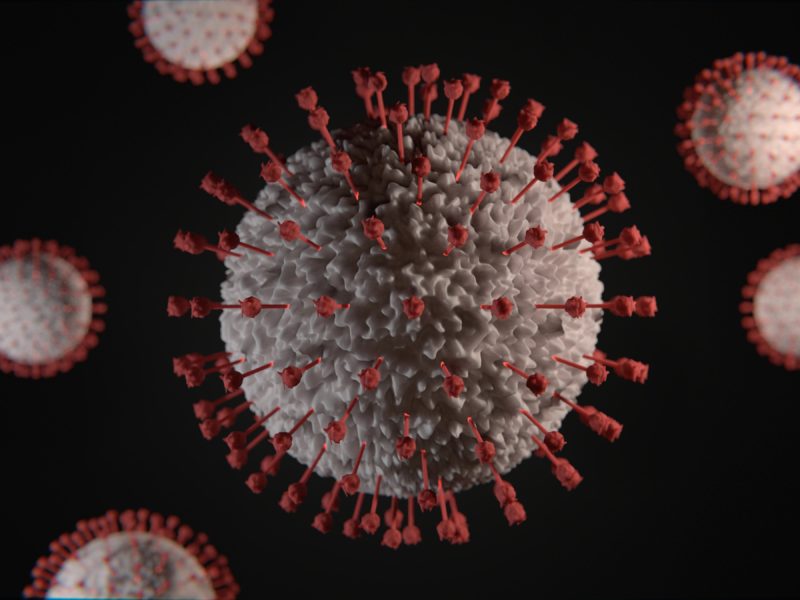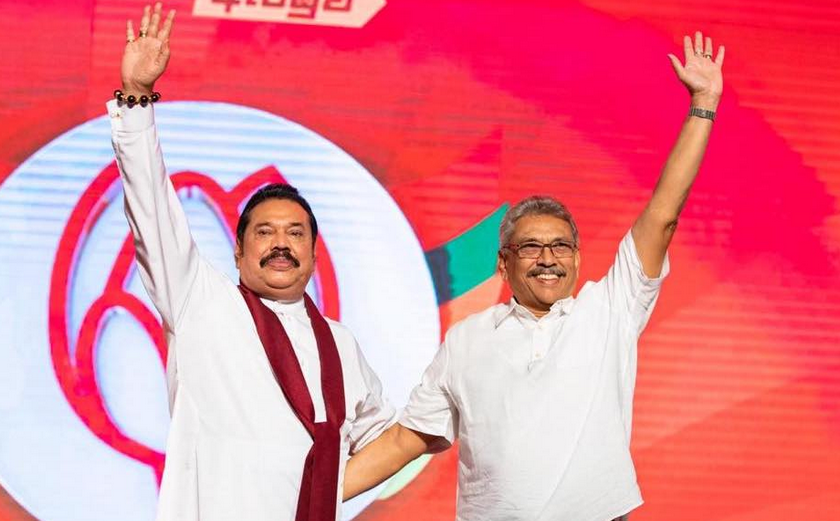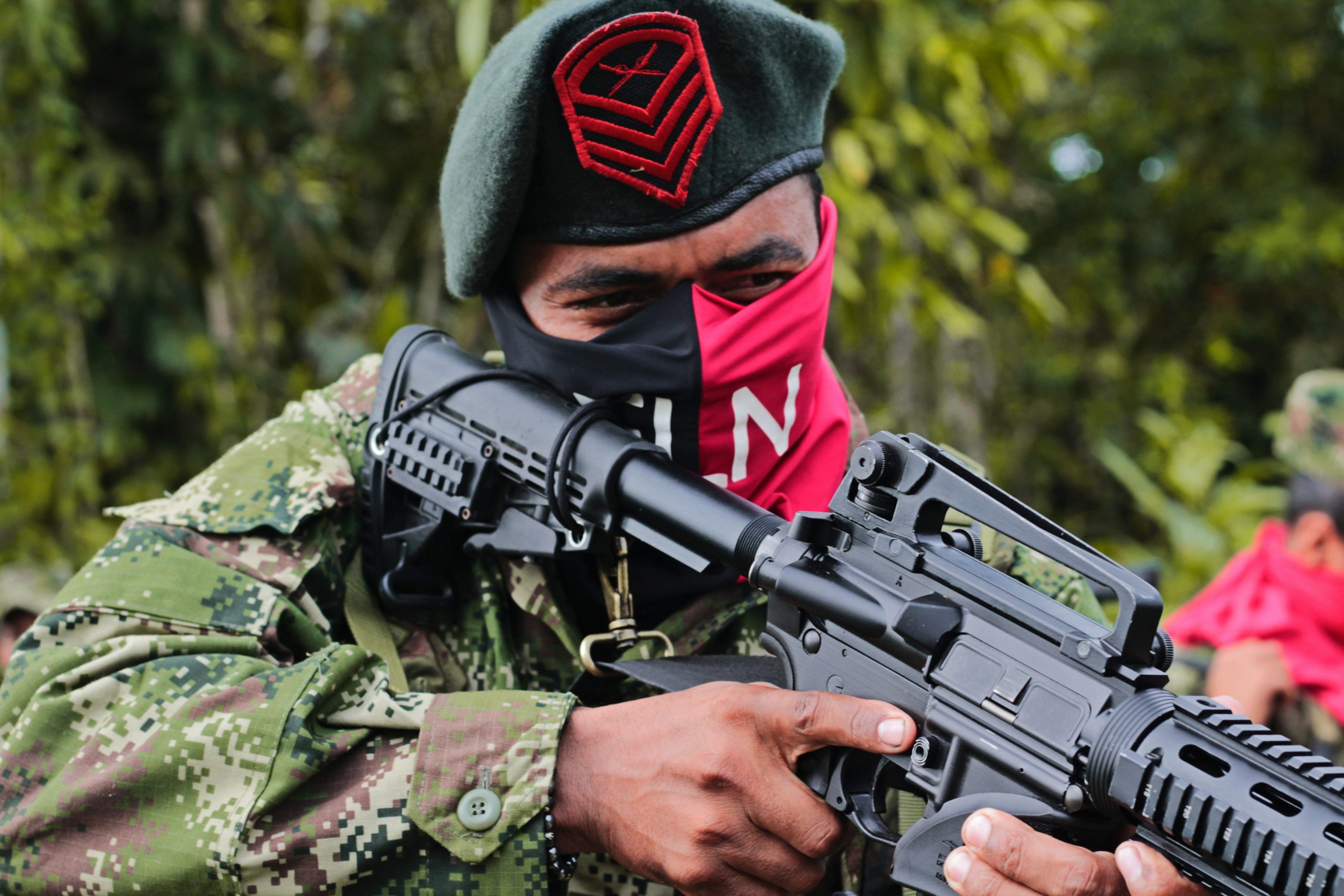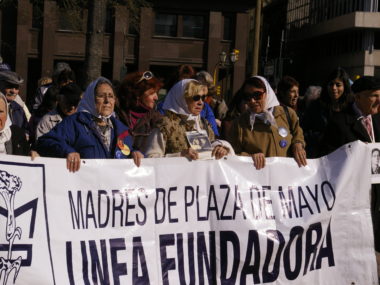Political Violence @ A Glance permanent contributors weigh in on the implications for civil liberties of the novel coronavirus and the disease it causes, COVID-19.
Christian Davenport
Consider what we know: the virus is spread through human interaction. The response: develop an anti-virus and, if this cannot yet be done, limit human interaction. One way to do the latter is to restrict movement, travel, communication, assembly and association, which we are starting to do.
Of course, a difficulty arises in a democracy because these efforts might not be viewed uniformly positively. But there are circumstances when restrictions to travel, communication, and assembly might be welcome, and the new coronavirus probably represents one of those moments.
Now, consider what will likely happen given the interest in trying to decrease human interaction. Movement will be suspended and/or highly monitored. As few organizations are prepared for such a thing and reporting or even coercion (force) might be necessary to deal with those who are not complying with directives, security force agents will be involved. Expect to see more militarized airports, borders, highways, and public spaces in an effort to limit movement.
We can also imagine that the number of curfews applied and enforced will grow. Between 1994 and 2012, there were 2.6 million curfew arrests in the United States; that’s an average of roughly 139,000 annually. FBI data. Curfews are normally implemented to limit challenges but could be extended to prevent a health crisis. Assembly and association would thus be hindered. It will not be clear in what direction restrictions will next flow because this behavior will be driven by the identification of new cases and an ever-widening net of exploration to discern how each patient came to be affected. This practically defines the category of “indiscriminate.”
While the health crisis might be potentially impacted by these activities, the resulting political crisis might move in a different direction. Another problem emerges: human interaction is the lifeblood of political democracy—especially one in the process of picking new leadership. We must move about, speak with one another, assemble, associate and so forth, no? Is democracy on hold until we can freely move? Is democracy on hold until we can freely associate? Maximalist conceptions of democracy suggest that yes, we have no democracy until repression has been removed. Minimalist conceptions of democracy would suggest that no, one or several aspects of democracy have been hindered but others will emerge: online fora, small-scale interactions, the development of hidden spaces for engagement like the infrapolitics discussed by James Scott.
Caveat civis! (Citizen beware.)
Erica Chenoweth
Like Christian, I am concerned about the effects of the virus on democratic processes and outcomes. It’s clear that much of our day-to-day work, interaction, and lifestyles must be digital for the foreseeable future. Like Christian, I expect a blossoming of innovative ways that people try to move democracy online, with contingency planning around digital party conventions, greater calls for the expansion of online voting, more widespread methods of election monitoring online, online town halls, virtual selfie lines, and wide varieties of digital forums for debate and deliberation around candidates and their policy platforms. But despite all of the optimism about the ways that digital technology can enhance democracy, it turns out that as a country (and world) we are still wrestling with the misuse of digital tech to undermine democratic outcomes. The US still hasn’t addressed the vulnerabilities that digital democracy poses for election manipulation through misinformation campaigns, cyber-vulnerabilities in our voting procedures, the stovepiping of discourse in digital echo chambers, and other issues. Without sufficient preparation and concerted attention, these issues will become even more severe as democracy moves online.
Barbara Walter
America is more polarized now than it has ever been in its history. Ever. You feel it in the angry political discourse, the inflexible voting blocs, and politicians’ politicalization of everything—including a new virus that affects us all. But the reaction of American citizens to COVID-19 has been anything but polarized or self-interested. It has been downright communitarian. Over the last week, millions of Americans have agreed to constrain their individual freedom on a mass scale in order to benefit the community as a whole. It is the first time in my life that (and I’m a Gen-Xer) that I have witnessed something like this. Americans are staying in their homes, they are shutting schools, universities, businesses, sporting events—often at great cost—in order to ensure that the most vulnerable members of our society survive. It is an extraordinary example of selflessness. We have decided, without Washington DC, to radically change our behavior in order to free up hospital beds for people we will never know. It gives me hope that we can come together, care about each other, and unite for the good of all people.
The spread of COVID-19 is scary. But the revelation has been how good it feels to give up some of my individual freedom in order to ensure that more Americans live to experience theirs.
Joe Young
I have always been interested in the tension between the freedom to do things versus the freedom from things. The novel coronavirus brings this problem to the fore. We all have the freedom to move, to associate, etc. But we should also have the freedom from infection. Someone who is perfectly healthy, who would like to go about their life, should have the freedom to do so while balancing the freedoms of others to remain free from this virus. This is the ultimate collective action problem and requires that people be cognizant of the fact that these freedoms are in conflict—and what is individually quite rational can be collectively harmful.
Deborah Avant
Emergencies open opportunities for extraordinary action. While this can be useful for moving quickly to solve a crisis, it also yields more possibilities for action that targets particular groups for reasons that have little to do with the problem at hand. The polarization in contemporary US politics, especially at the national level, seems to be heightening the likelihood of this sort of action that threatens civil liberties for some groups more than others. But people at some local and state government levels, and acting on behalf of particular companies and civil society groups have focused on the problem at hand in ways that could interrupt this polarizing dynamic. Watching the interaction between these levels is one key to understanding whose civil liberties are at risk.
Allison Beth Hodgkins
What about the freedom to make an informed decision? We don’t often think of information as a civil liberty, but in times of crisis, having accurate, credible, public information can literally be the difference between life and death. As the scale of the outbreak in China demonstrates, when governments suppress information, people pay the price. In the early stages of the outbreak, local officials buried reports of human-to-human transmission to avoid upsetting Beijing. Doctors trying to raise alarm were chastised for fear-mongering and threatened with jail. This created a false sense of security that allowed the virus to spread. Iran similarly suppressed information about the spread of the virus for fear that news of a pandemic would depress turnout in recent parliamentary elections in which hardliners were expected to (and did) win by large margins. Iran now has the third-worst outbreak globally, and most suspect the actual infection rate is far worse than officials allow. Conversely, in other authoritarian countries where distrust in official information is the norm, people joke about the “one” reported case being 1,000, hoard supplies, take unsanctioned and potentially unsafe counter-measures—like drinking grain alcohol to kill the virus or recycle rumors of the virus being another US/Israeli plot. In this country, we take access to reliable information for granted. We shouldn’t.
Peter Krause
Much has been written about when quarantines for COVID-19 should start (or should have started), but I have heard almost nothing about when they should end. It is no small decision for an individual to decide to stay in her home for days, weeks, or months at a time. It is an even more difficult and costly decision for governments to impose such quarantines, with significant implications for civil liberties. Some people may hem and haw a bit when a quarantine is imposed, but that is often a time when individuals are relatively more receptive to it: the threat is new and scary, and the restrictions freshly imposed. What happens in a few weeks when people start to get antsy, especially if the number of cases hasn’t skyrocketed—precisely because of the effectiveness of the quarantine?
If there are exponentially more cases, people will want to stay in to keep themselves safe from imminent danger. But let’s say there are just 2-3 times as many cases as before (so, a few hundred or perhaps one thousand in and around Boston, where I live). Some people would then likely decide it was worth the risk to go out again, and governments may decide for political and economic reasons to lift the quarantine. However, unless collective immunity, testing, or treatment has improved significantly, doesn’t society then face an even greater risk than before, given that there are still more cases than when the quarantine was imposed in the first place? When, therefore, is the right time to end a quarantine? I think most people agree with “flattening the curve,” but where on the curve should a quarantine be lifted, and how exactly do you know where on the curve you are without the benefit of hindsight? I am not a public health professional, and these are some of the issues I would like to see addressed in the coming days and weeks to help set the public’s expectation for what’s to come.
Sara Bjerg Moeller
The potential implications of the new coronavirus for civil liberties—in the United States and beyond—are important, but I’m also concerned about the implications for US foreign policy and national security. The Trump administration wasn’t exactly a paragon of global leadership to begin with and everything we’ve seen so far—from a communication strategy intent on blaming others and portraying COVID-19 as “foreign,” to the surprise announcement banning (most) European travel to the US—is further cause for alarm.
In the short term, the Trump administration’s “go-it-alone” approach to halting the spread of the new coronavirus will hurt efforts to get a handle on the pandemic here at home. Our friends and partners around the world are less likely to offer us advice and assistance now that the president and his team have made it clear they aren’t interested in working with others.
But the administration’s decision to squander what could have been a chance to reclaim US leadership on the international stage by orchestrating a coordinated global response will also have longer-term implications for America’s ability to get other countries to work with us on a host of other collective action problems like climate change, in the future. While perhaps not surprising, it’s still discouraging that the Trump administration dropped the ball.
Emily Hencken Ritter
Situations like the current pandemic bring into focus the distinction between individual rights and community rights. Throughout history, the US and other Western-style democracies have put primary legal and practical focus on protecting individual rights: the right to privacy, to property, to movement, to do and say what you like as long as it doesn’t break the law or harm others.
Community rights are a more frequent focus of other types of societal structures, like far-left political systems or Asian and African cultures that put community first, above the rights of the individual.
Public health crises put these in tension. Indeed, to protect individuals from contracting the virus (especially vulnerable people), public health experts (and common sense) recommend that we act in the communal interest: restricting movement, banning assembly, imposing curfews, etc. International human rights law has continually recognized this tension that arises in emergencies. These rights of assembly and movement are ones that are explicitly labeled in treaties like the International Covenant on Civil and Political Rights as derogable—or those rights that can be suspended in times of public emergency. This legal escape clause is the international community’s recognition that sometimes we have to violate rights to protect lives, as when cities are under attack or in response to natural disasters…or during pandemics.
The tricky part about declaring states of emergency to derogate rights obligations is that they’re frequently abused. What might start as a legitimate declaration sneakily doesn’t end when the crisis ends. Or claims of danger are overstated to give leaders breathing room from domestic pressures. It’s the public’s and the separation of powers’s duty to hold governments all over the world accountable for how they use these powers, because we all, in the end, want to be healthy AND have our rights back.
Juan Tellez
I keep thinking about the plight of undocumented people in accessing healthcare in these moments, and how a government’s immigration policy can undermine public health efforts to slow the spread of the virus. From the perspective of public health officials, it’s ideal for everyone to take preventative measures and seek treatment when the need arises. Yet people who are undocumented may have reason to fear that interacting with the healthcare system could expose them to deportation; thus they may avoid seeking treatment.
Even if the state were to offer “anonymous” testing or preventative services, it is not clear the undocumented are able to trust that the government will not prosecute them in the future. A key question then is whether the government wants, or even can, credibly commit to treating the undocumented community and what implications that has for public health.
Thomas Zeitzoff
Part of what makes democracies so vibrant is the freedom of the press, and the ability to openly express dissenting and divergent opinions. Yet in a pandemic, this presents problems for public health officials. The goal of public health communication during pandemics is two-fold. First, there needs to be a clear, unified message that delineates the risks to the public from the disease. Second, officials have to get buy-in for costly sacrifices to mitigate the risk to society as a whole (such as school closures, travel restrictions, etc.). Delineate the threat, and then explain the steps necessary to deal with it and what’s required of everyone.
When you have Dr. Fauci, the director of the National Institute of Allergy and Infectious Diseases, talking about the seriousness of COVID-19, and then pundits like Rush Limbaugh and Sean Hannity downplaying the risks, or spouting conspiracy theories—that’s a problem. Trust in US institutions is already low. Conspiratorial thinking gives skeptics a reason to avoid following these stringent, but necessary, measures. And disregard for public health measures makes us all worse off and less safe. There’s not an easy fix, but low trust in institutions, partisanship, and lots of misinformation are not a good recipe for a swift and strong public health response.
For more PV@G coverage of the COVID-19 crisis see: Information Control and the COVID-19 Crisis.





